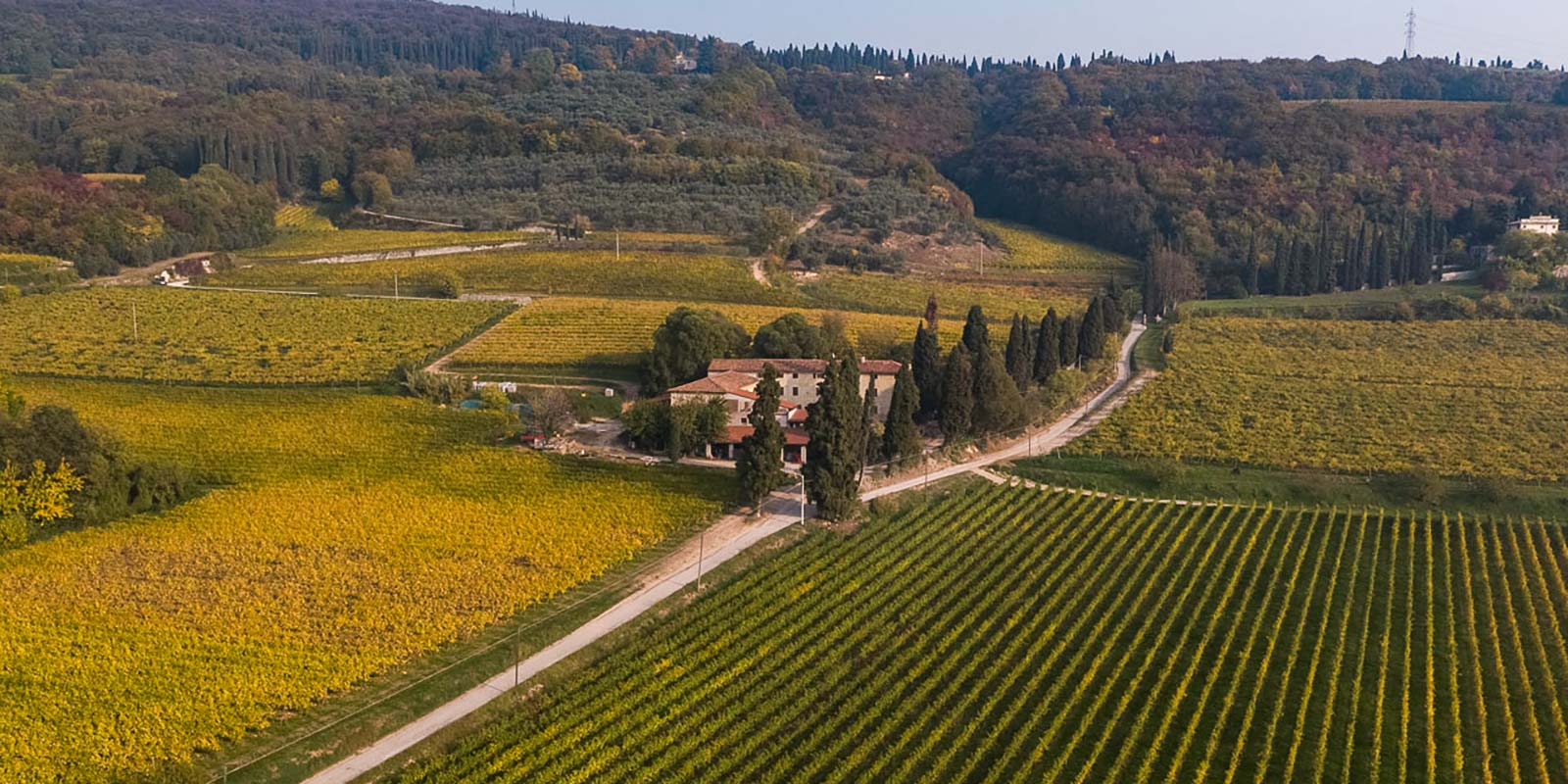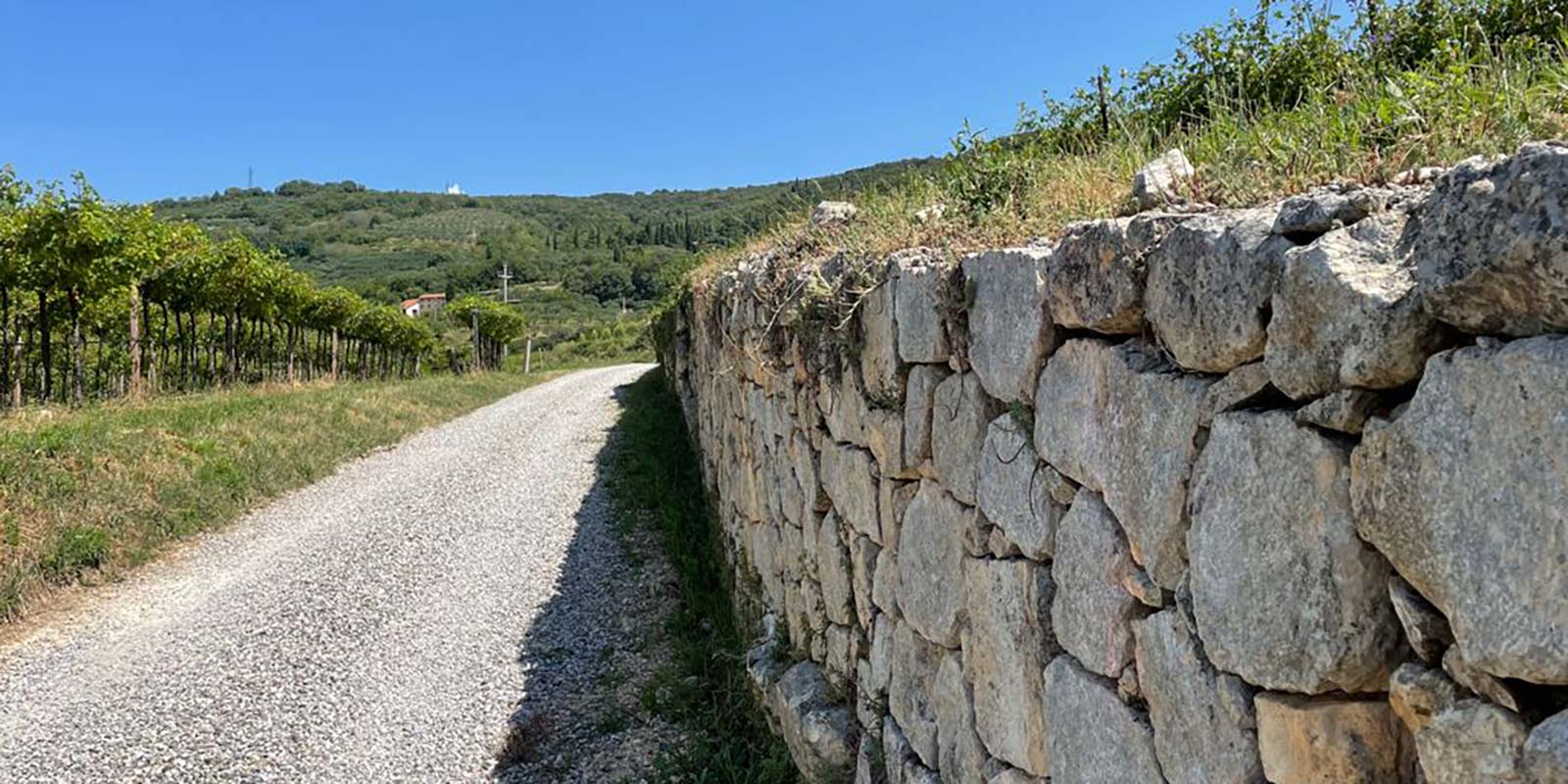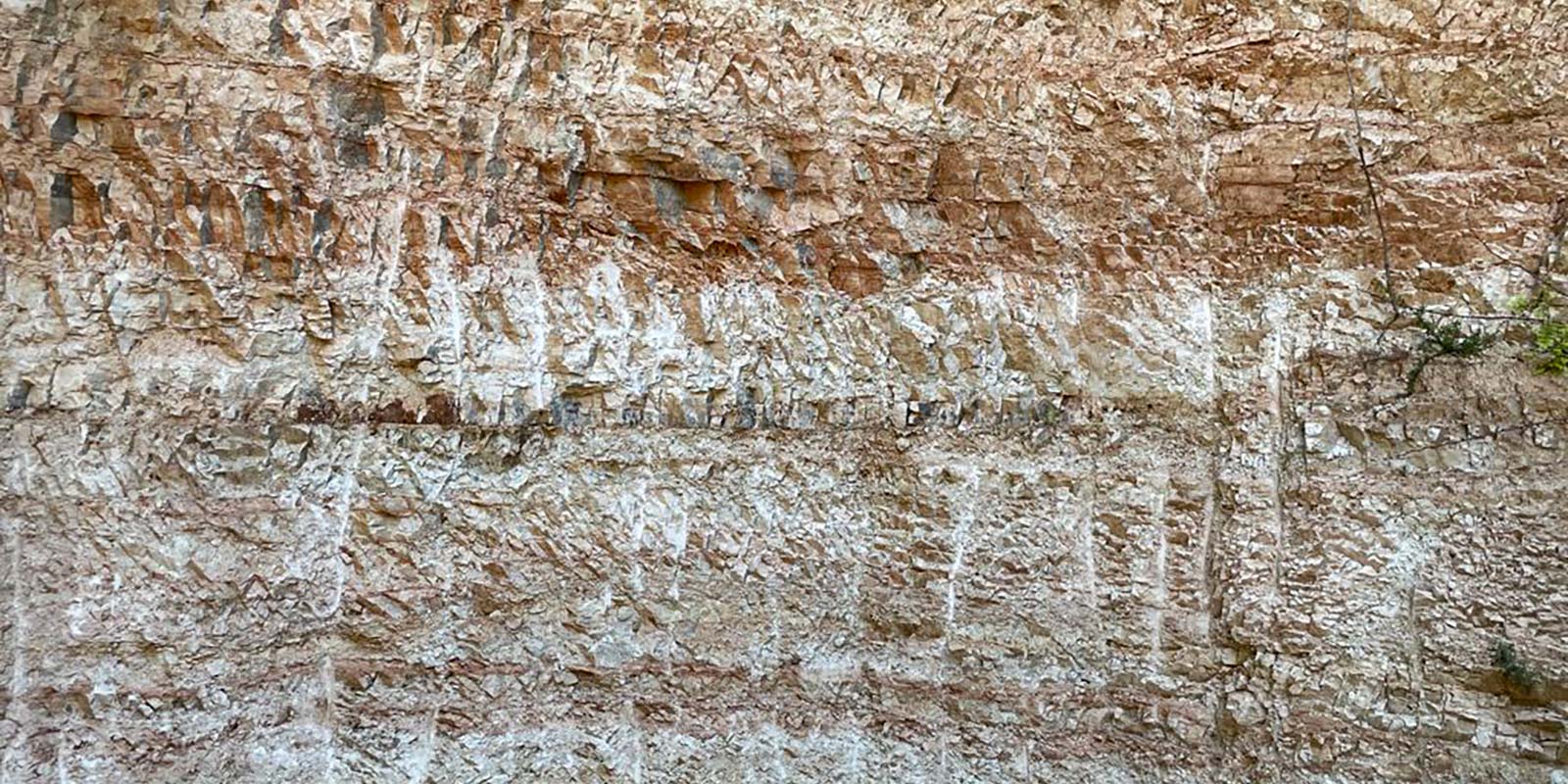Terroir and Biodiversity
Owing to its pedological and geological complexity, to the mild and windy climate as well as to its exposure, the hilly terrain of the Estate is well suited for high-end viticulture. The vineyards are planted on dry-stone terraces, which are strategically placed at different heights, between 100 and approx. 330 metres above sea level, respecting soil structure.

In December 2018, the Intergovernmental Committee for the Safeguarding of the Intangible Cultural Heritage inscribed the “Art of dry stone walling” on the UNESCO List: These constructions are an example of the harmonious relationship between man and nature while playing a crucial role in preventing landslides, floods and avalanches, as well as in fighting soil erosion and desertification.

The area features a deep layer of whitish marly limestone that belongs to the Maiolica geological formation (known in the Veneto region as Biancone), covered by a layer of pink marly limestone (called Scaglia Rossa) that enrich the vine with minerality, finesse and body. The texture of the silty and clayey soil with gravelly skeleton and the ancient drywall terracing ensure excellent drainage.

Going up to the vineyards at the top, we can find particularly calcareous soils, from which full-bodied wines with concentrated and elegant aromas and an intense colour are obtained. The soils of the vineyards down in the valley, instead, are mainly loamy and clayey, which results in thin and rather fresh wines, rich in fruity aromas.
We believe that the natural uncontaminated environment and its products are a collective value to be shared as a living part of our present and a guarantee for future generations. Biodiversity is a source of wealth for natural ecosystems, which in viticulture translates into a virtuous circle that strengthens the balance and health of the vineyards and all that surrounds them. It is for this reason that, in the vineyard, we make a point of avoiding agronomic practices that affect the natural environment by promoting a philosophy that respects and encourages biodiversity.
Environmental protection also applies to all the land on the Villa San Carlo estate, including ten hectares of olive groves and a large wooded area. A direct consequence of this is that this land is inhabited by numerous animal species: badgers, weasels, beech martens, hares, fallow deer, roe deer, hedgehogs and porcupines, as well as hawks, buzzards, little owls and tawny owls are just some of our friendly neighbours.
